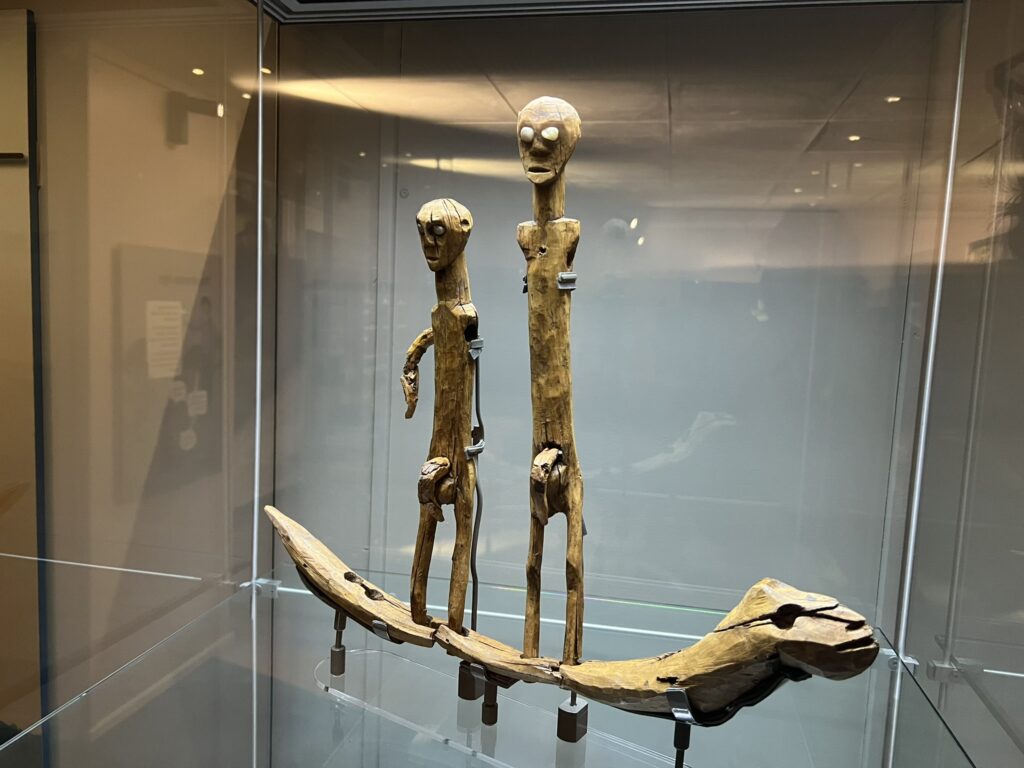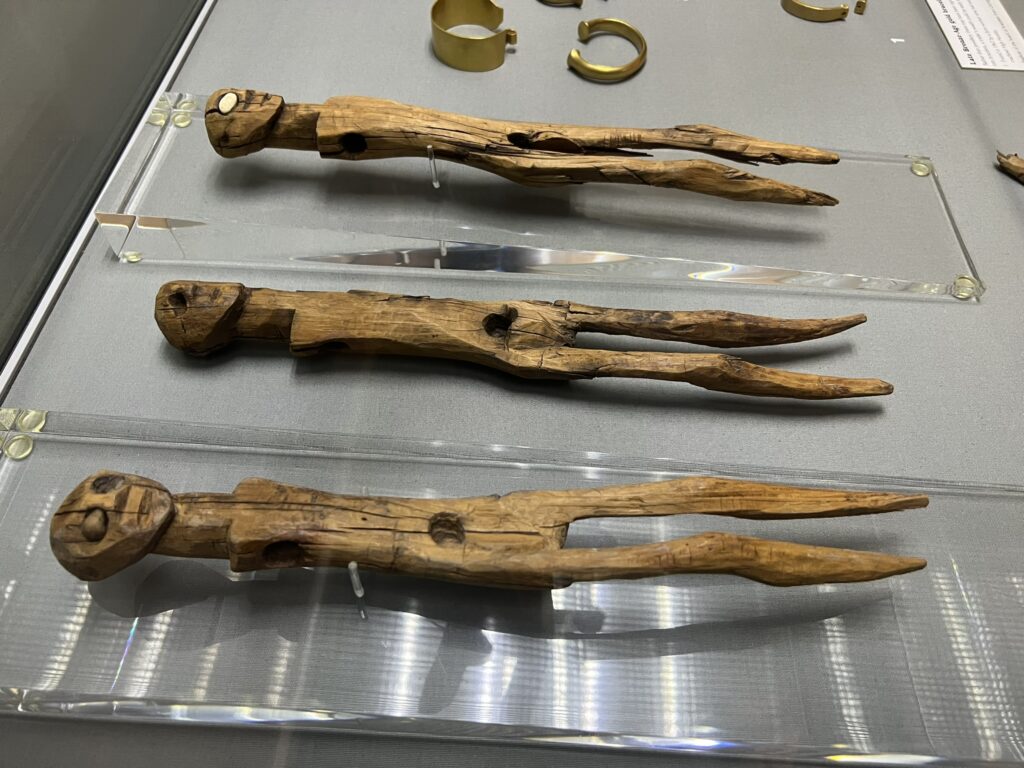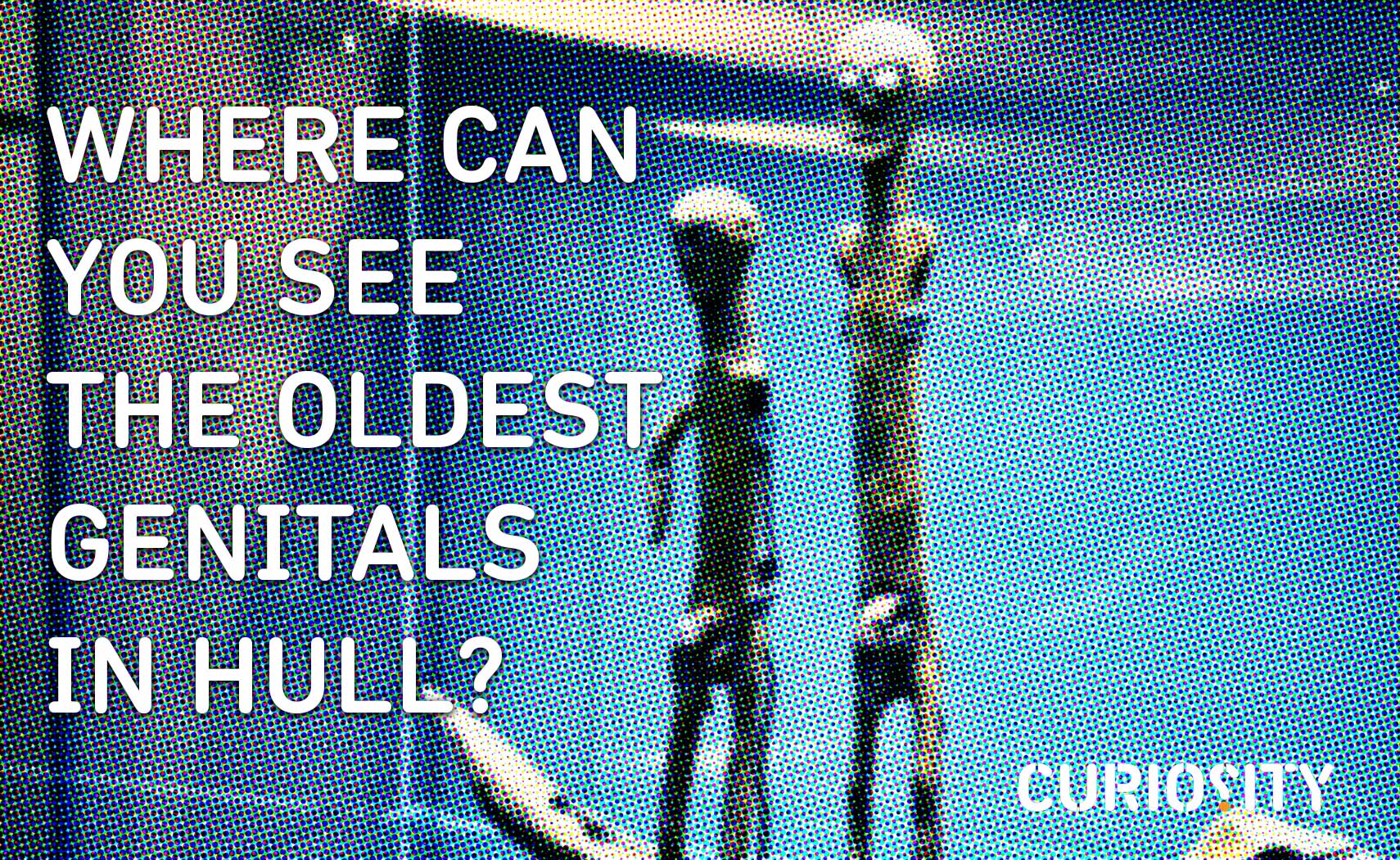Amongst stiff competition, our cub reporter Angus ‘Scoop’ Young gets to the bottom of the tale.

It might not be the question on most peoples’ lips but the answer lies in a dark room off High Street. The next time you visit the Hull and East Riding Museum head for the exhibition space dedicated to the Bronze Age. Housed in a glass cabinet are a a couple of prehistoric penises attached to a group of small but recognisably human figures together with a boat complete with a carved serpent’s head.
Between 35 and 41 cm tall and made from yew, the five wooden figurines were accidentally unearthed by labourers digging a ditch close to Roos, near Withernsea, in Holderness in 1836. Thanks to modern day radio-carbon dating, experts now know they are around 2,600 years old. Clay removed from the ditch had preserved them. Strikingly, the eyes of two of the figures appeared to be made from sparkling rocks, later identified as quartzite. The haul also included various attachments which included tiny wooden shields, paddles and, er, something else.
The finds were brought from Roos to the premises of the Hull Literary and Philosophy Society which had been founded 14 years earlier to promote literature and science among its well-heeled members by hosting exhibitions and a programme of public lectures. When it came to cleaning and restoring the figures, it was evident each one had been made with empty slots for arms as well as similar holes in each groin.
As no obvious wooden arms had been retrieved from the ditch, it soon became clear that some of the items were actually detachable wooden genitals. However, the idea of exhibiting prominent penises proved too much for prudish Victorian sensibilities. Imagine the embarrassment!

Deciding they were too risque for public display, the offending organs were instead glued into the shoulder sockets and passed off as arms, albeit tiny ones. The gaping holes left in the figures’ groins were conveniently ignored for the next 150 years until a reappraisal of the finds was carried out when it was decided to return the private parts to their rightful locations.
The conservation work not only removed the Victorian glue and varnish but also provided experts with an opportunity to study the figures in closer detail. They established subtle differences, not just in height and girth but in the fact that some had nostrils and others didn’t. It was also concluded a second boat must have been originally buried as the surviving one only had space for four of the five figures retrieved from the clay.
What were they for? Archaeologists now believe their burial spot was a sacred site where offerings could be made, perhaps to ancient gods or ancestors. Even their detachable genitals are now thought to have been a way of making the figures male or female at any one time, reflecting the shape-shifting myths surrounding the Norse god Odin. The type of clay also suggests the site was once near a watercourse and this tallies with similar finds across Europe where seemingly important items from the period have been deliberately deposited in rivers, marshes and marshland.
Now known as the Roos Carr figures, they are not unique with nine other similar surviving examples in Britain and Ireland. They range in date from 2,500BC to 148BC and are made from different woods – ash, pine, yew or oak. Some are definitely male while others, like our crew, have removable genitalia and could be male or female. Only one in Scotland is unambiguously female.
Two years ago East Yorkshire’s most historic bits and bobs finally made the national spotlight when the Roos Carr figures were loaned to the British Museum as part of an exhibition on the era of Stonehenge.
